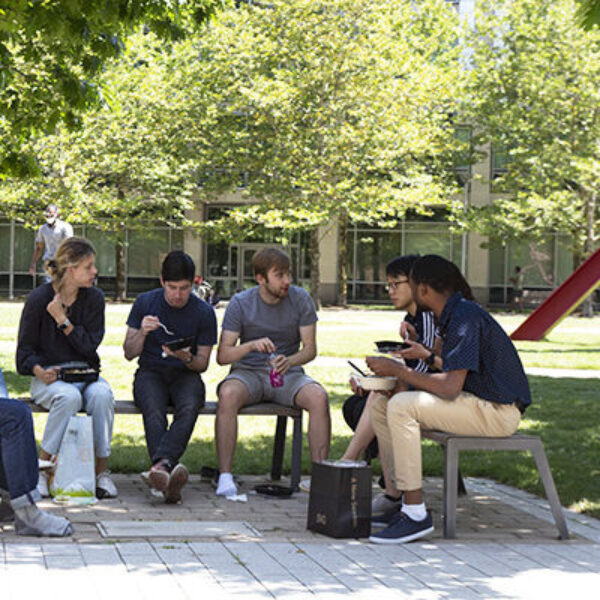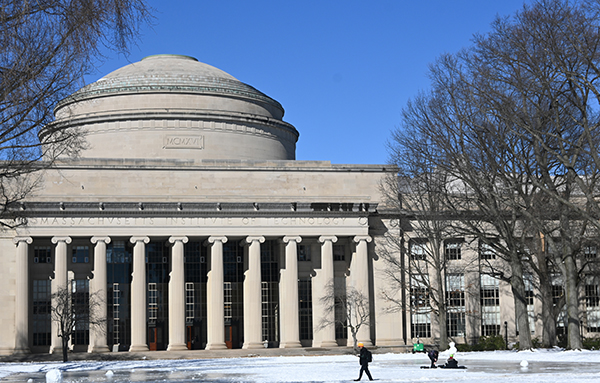MIT named to Prestigious 2026 Honor Roll for Mental Health Services

Princeton Review recognizes MIT as one of 30 institutions with a strong commitment to mental health and well-being
MIT is often recognized as one of the leading institutions of higher learning not only in the US, but in the world, by several publications, including U.S. News & World Report, QS rankings, Times Higher Education, and Forbes.
Now, MIT also has the distinction of being one of just 30 colleges and universities out of hundreds recognized by Princeton Review’s 2026 Mental Health Honor Roll for providing exemplary mental health and well-being services to its students. This is the second year in a row that MIT has received this honor.
The honor roll was created to be a resource for enrolled students and prospective students who may seek such services when applying to colleges. The survey asked more than a dozen questions about training for students, faculty, and staff; provisions for making new policies and procedures; peer-to-peer offerings; screenings and referral services available to all students; residence hall mental health resources; and other criteria, such as current online information that is updated and accessible.
Overall, the 2025 survey findings for all participating institutions are noteworthy, with Princeton Review reporting double-digit increases in campus counseling, wellness, and student support programs compared with its 2024 survey results. Earning a place on the honor roll underscores MIT’s commitment to providing exceptional services for graduate and undergraduate students alike.
Deputy Chief Health Officer and Chief of Mental Health & Counseling Services, MIT Health, Karen Singleton, says, “This honor highlights the hard work and collaboration that we do here at MIT to support students in their well-being journey. This is a recognition of how we are doing those things effectively and a recognition of MIT’s investment in these support services.”

With 25 percent of MIT’s student population seeking mental health services, MIT Health has 36 clinicians to meet the needs of approximately 20,000 yearly visits. MIT Health recently added an easy online scheduling system at the request of students. Singleton explains, “We strive to have a very diverse staff, with different educational backgrounds and training. Many of our clinicians speak languages other than English, and that reflects the diversity of our student body.”
Many mental health and well-being services are offered through several departments housed in the Division of Student Life (DSL). They often collaborate with MIT Health and partners across the Institute, including in the Division of Graduate and Undergraduate Education, to provide the best services for the best outcomes for MIT students. (See below for a complete list of services.)
Support resources in DSL are highly utilized and valued by students. For instance, 82 percent of the class of 2025 had visited Student Support Services (S3) at least once before graduating, and on a regular satisfaction survey, 91 percent of students who visited S3 said they would return if needed.
“Student Support Services supports over 80 percent of all undergraduates by the time they graduate and over 60 percent each year. Our offices, including ORSEL, GradSupport, S3, SMHC, the CARE Team, and Residential and Community Life work incredibly well together to support our students,” says Kate McCarthy, senior associate dean, Support, Wellbeing, & Belonging.
“The magic in our support system is the deeply collaborative nature of it. There are many different places students can enter the support network, and each of these teams works closely together to ensure students get connected to the help they need. We always say that students shouldn’t think too much about where they turn…if they get to one of us, they get to all of us,” says David Randall, dean of Student Life.
Vice Chancellor, Division of Student Life, Suzy Nelson adds, “It is an honor to see MIT included among colleges and universities recognized for excellent mental health services. Promoting student well-being is central to our mission and guides so much of what we do. This recognition reflects the work of many in our community who are dedicated to creating a campus environment where students can thrive academically and personally.”
More resources can be found on the DoingWell website.
Have a question about this article?
Contact Sarah Foote from the Division of Student Life’s Communications Office at dsl-comm@mit.edu







